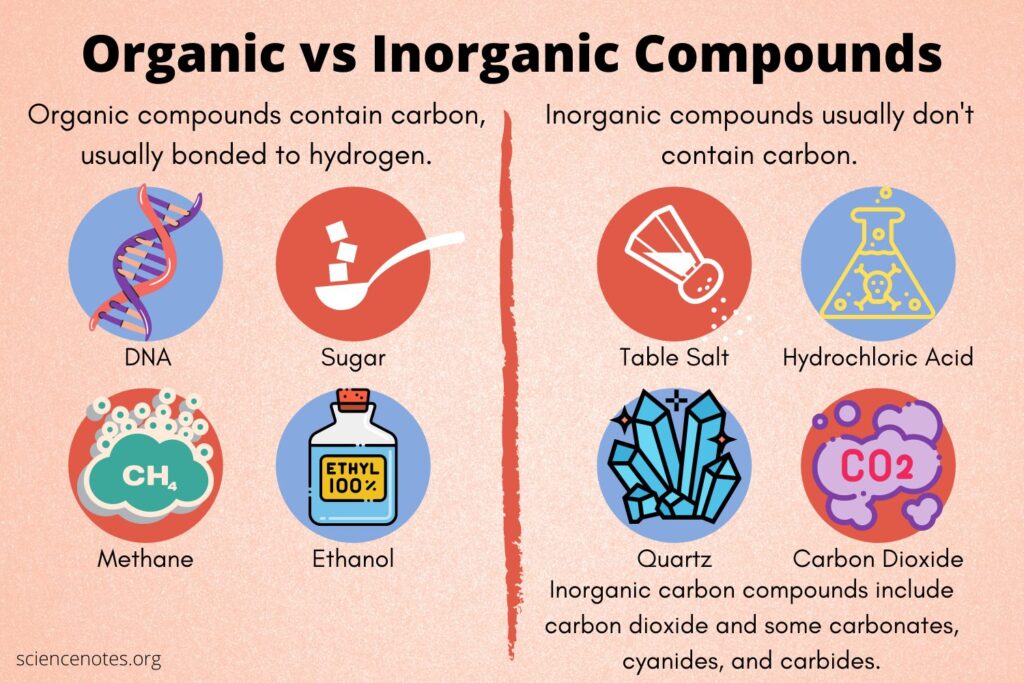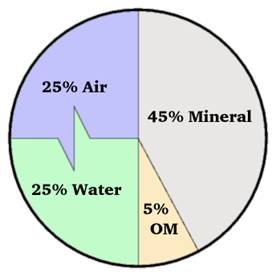Soil is a loose surface material that provides a growth medium for plants. It is a source of nutrients and water that also provides structural support for a plant’s root system. Soils vary in terms of their physical and chemical properties, and some soils are better than others at sustaining plant life.
This article, the first in a series, explains what soil is and what it’s made of. Other articles in this series will cover topics like soil health and its relationship to grazing, manure, and water quality. Thanks for joining us on this journey. It’s a vital one since soils provide humans with up to 98.8% of our food.
How the soil is like your skin
Some people compare soil to carpet, but soil is more like your skin instead. That’s because skin and soil are both thin, alive and porous. To put soil’s thinness in perspective, consider that the distance between the Earth’s surface and its center is 6,000 kilometers. Yet, the soil is usually just one or two meters deep. The soil seems deep when you’re digging a hole, but you’re hardly scratching the surface of the Earth.
Like human skin, the soil is also teeming with life. According to the Natural Resources Conservation Service (NRCS) in the U.S. Department of Agriculture (USDA), “there are more individual organisms in a teaspoon of soil than there are people on earth.” As of 2022, that was 8 billion people! Soil, like skin, is alive. Just as doctors talk about the skin biome, biologists talk of a soil biome – a diverse microbial ecosystem.
Finally, the soil is like your skin because they’re both porous. More specifically, they both have openings that let liquids and gasses pass. As we’ll see in the next section, the passage of air and water partly depends on the soil’s components. Some ingredients are organic, meaning that they contain carbon, one of the universal building blocks of life. Others are inorganic, but they’re still essential.
What is soil made of?
Soil has five main ingredients.
- Minerals
- Organic Matter
- Living organisms
- Water
- Air
These ingredients can vary both in composition and in proportion to each other. In general, however, minerals represent the largest percentage of soil at about 45%. Water and air are each 25% of soil for a collective 50%. That brings our total to 95% and leaves only about 5% for organic matter and living organisms. That percentage might seem small, but don’t underestimate its importance.
Minerals
Minerals are inorganic elements or compounds that are formed by geological processes such as erosion. They have specific chemical and physical properties and an orderly internal structure. Quartz, feldspar, mica, and calcite are examples of minerals whose names you might recognize. Rocks are aggregates of one or more minerals and include granite, basalt, limestone, and sandstone.
Organic Matter
The organic matter in soil consists of plant or animal tissue in various stages of decomposition. Plant residues and living microbial biomass, and active soil organic matter called detritus, all contribute to soil fertility. That’s because their breakdown results in the release of plant nutrients such as nitrogen, phosphorous, and potassium. Organic matter also provides food for living organisms in the soil that also benefit plants.
Living Organisms
Healthy soil contains living organisms that range in size from microorganisms that are too small to see with the naked eye to earthworms that you can hold in your hand. These organisms promote the decomposition of organic matter and also get nutrients from it. They also support nitrogen fixation, a concept we’ll discuss in a future article, and improve soil structure, drainage, and aeration. This will also improve a plant’s drought resistance.
Water
Soil contains water, but the amount of water depends in part on the soil’s pores and its water-holding capacity. Soil texture, a physical property, can have a significant effect on water retention. For example, quartz-rich sandy soils have low water retention. Clay soils can hold larger amounts of water but are not well-drained, which can contribute to waterlogging. Neither too much nor too little water is good for plant life.
Air
The last key ingredient in soil is air, a mixture of different gases. In Earth’s atmosphere, air consists of approximately 78% nitrogen and 21% oxygen. It also contains small amounts of other gases, such as carbon dioxide. The air in soil differs from atmospheric air in that soil air has a higher concentration of carbon dioxide. Ideally, a well-aerated soil has enough oxygen and moisture to support microorganism respiration.
Thanks for joining Go Natural Education for the start of this important journey. We’ll be back soon with the next installment in our soil series.



